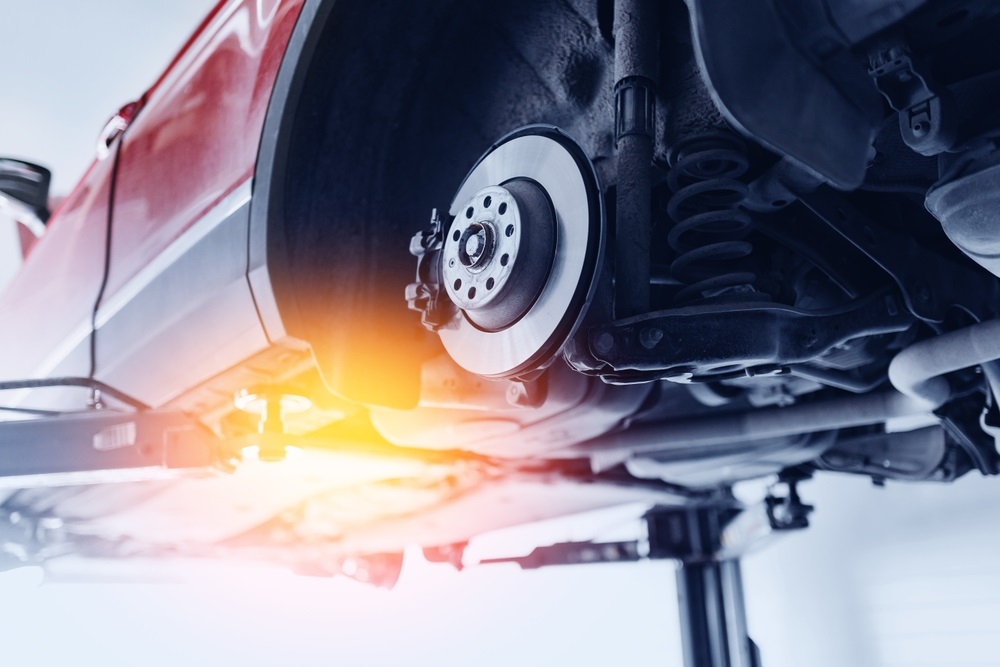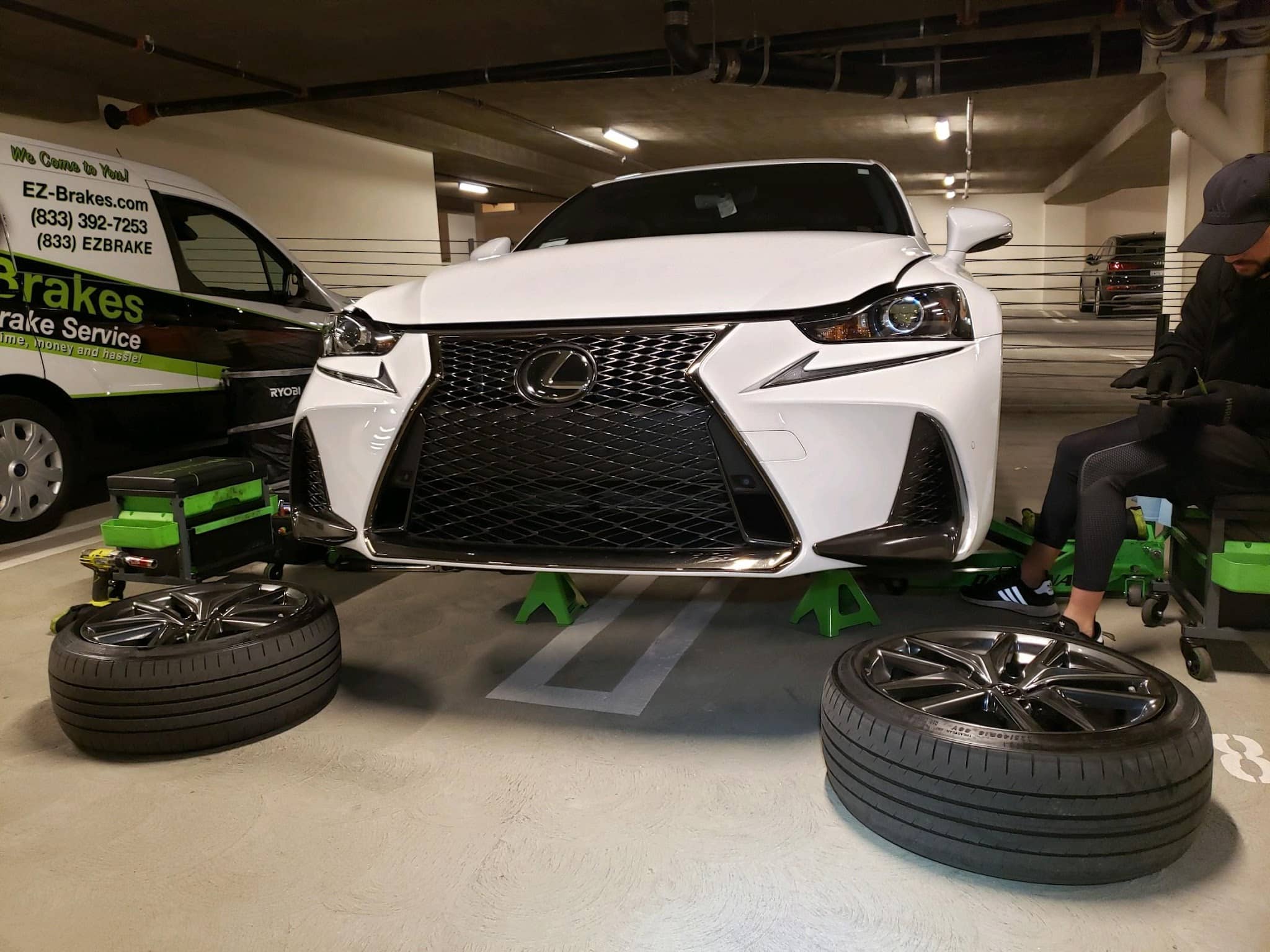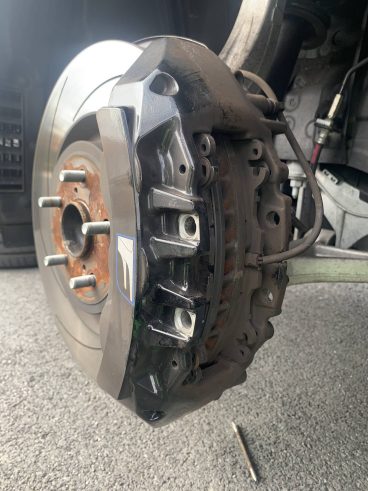Your brake system is one of the most important components of your vehicle. They allow you to stop smoothly, avoid collisions, and maintain control in emergencies. However, many drivers neglect signs of brake problems, only addressing issues when their brakes start to fail. This approach can be costly—not just in repair bills but also in potential accidents and damage to your vehicle.
At EZ-Brakes, we provide mobile brake repair services throughout Orange County, offering you the convenience of professional repairs without the hassle of visiting a shop. Whether you need a brake pad replacement, brake fluid service, or a complete brake system inspection, we’re here to help.
In this blog, we’ll walk you through seven crucial things every driver should know about brake repair. By staying informed, you can protect your car, your passengers, and yourself.
1. Recognize the Warning Signs of Brake Failure
Your vehicle doesn’t just suddenly lose braking power. It gives you signs when something is wrong, and catching these early can prevent expensive repairs and dangerous situations.
Here are the most common warning signs that your brakes need attention:
Unusual Noises
- Squeaking or squealing – Usually caused by worn brake pads. When brake pads wear down, a small metal indicator makes contact with the rotor to alert you that it’s time for a replacement.
- Grinding – A grinding noise can mean that your brake pads are completely worn out and the metal backing plate is making contact with the rotors. This can cause severe damage to the braking system.
Read More: 5 Signs It’s Time for a Brake Pad Replacement
Vibrations or Pulsations
- If your brake pedal vibrates or pulsates, your rotors may be warped. Warped rotors don’t allow even contact between the brake pads and the rotor, reducing braking efficiency.
Soft or Spongy Brake Pedal
- If your brake pedal feels soft or goes to the floor easily, there could be air in the brake lines, low brake fluid, or a failing master cylinder. This could indicate air in the brake lines or the need for a brake fluid service or change.
Pulling to One Side
- If your vehicle pulls to one side when braking, it could indicate uneven brake pad wear, a stuck caliper, or brake fluid contamination.
Ignoring these signs can result in dangerous driving conditions. If you experience any of these issues, schedule a brake inspection with EZ-Brakes immediately!

2. Prioritize Regular Brake Inspections
Just like oil changes and tire rotations, brake inspections should be part of your regular car maintenance routine. Most experts recommend having your brakes checked every six months or 6,000 miles, but this varies based on your driving habits.
Why Regular Brake Inspections Matter
- Catch problems early – Small issues, like thin brake pads or minor fluid leaks, can be fixed before they cause major damage.
- Improve safety – Faulty brakes can increase your stopping distance and put you at risk on the road.
- Save money – Replacing brake pads is much cheaper than replacing damaged rotors, calipers, or the entire braking system.
- Avoid shaking or steering wheel vibrations caused by worn-out brake rotors.
At EZ-Brakes, we perform thorough mobile brake inspections, identifying wear and tear before it becomes a costly problem. Book your appointment today!

3. Maintain Proper Brake Fluid Levels
Brake fluid is essential for the proper function of your braking system. It acts as a hydraulic force, transferring pressure from your foot on the brake pedal to the brake calipers and pads. However, brake fluid can become contaminated over time.
Signs You Need a Brake Fluid Flush
- Dark, dirty, or cloudy brake fluid – New brake fluid is clear or slightly yellow. If yours looks dark, it’s time for a change.
- Spongy brake pedal – Air or moisture in the brake fluid can reduce brake responsiveness.
- Burning smell after braking – Overheated brake fluid can reduce braking efficiency.
Most vehicles need a brake fluid flush every 2 years or 24,000 miles.
4. Inspect Brake Pads and Rotors Regularly
Brake pads and rotors work together to stop your vehicle. Over time, both components wear down and need replacement.
How Long Do Brake Pads and Rotors Last?
- Brake pads typically last 30,000 to 70,000 miles, depending on driving habits.
- Rotors can last 50,000 to 70,000 miles, but hard braking and worn-out pads can shorten their lifespan.
Signs You Need Brake Pad or Rotor Replacement
- Brake pads less than ¼ inch thick
- Deep grooves in the rotors
- Squealing or grinding noises
- Longer stopping distances
Replacing brake pads and rotors on time keeps your vehicle running safely.
https://www.shutterstock.com/image-illustration/wheel-structure-car-brake-isolated-on-2142682489
5. Avoid Braking Habits That Wear Out Brakes Faster
Your driving habits directly affect how long your brakes last. Avoid these bad habits to extend brake life:
- Riding the brakes – Keeping your foot on the brake pedal while driving causes unnecessary wear.
- Hard braking – Slamming on the brakes frequently wears down brake pads and generates excessive heat.
- Carrying heavy loads – More weight increases braking stress, shortening pad and rotor life.
Instead, practice gentle braking and maintain a safe following distance to reduce wear and tear.
6. Invest in High-Quality Brake Components
Not all brake parts are created equal. Cheap, low-quality parts wear out faster and don’t provide the best stopping power.
Why Choose High-Quality Brake Parts?
✔ Better performance – Premium brake pads and rotors provide better stopping power.
✔ Longer lifespan – High-quality parts last longer, reducing how often you need replacements.
✔ Increased safety – Cheap brake pads can overheat quickly, leading to brake fade and longer stopping distances.

7. Always Choose Professional Brake Repair Services
While some DIY enthusiasts attempt brake repairs at home, professional service ensures accuracy, safety, and efficiency.
Benefits of Professional Brake Repair
- Proper installation – Improperly installed new brake pads can cause uneven wear and poor braking performance.
- Accurate diagnostics – Professional technicians detect issues like low hydraulic pressure or worn brake drums.
- Warranty protection – Many professional repairs come with warranties, giving you added peace of mind.
At EZ-Brakes, our certified technicians provide convenient mobile brake services—we come to you, so you don’t have to waste time at the shop!

FAQ About
How do I know if my brakes need repair?
Listen for squealing or grinding sounds, watch for vibrations, and check if your brake pedal feels soft.
How often should I replace my brake pads?
Most brake pads last 30,000 to 70,000 miles, but it depends on your driving habits.
Why is my brake fluid low?
Low brake fluid could indicate a leak or worn brake pads, which require more fluid to function properly.
Can I drive with worn-out brake pads?
Driving with worn brake pads increases stopping distances and can damage your rotors, leading to expensive repairs.
Why is my brake light on?
A brake light could indicate low brake fluid, worn pads, or a hydraulic pressure issue.
Conclusion
Brake maintenance is crucial for your safety and your wallet. By recognizing warning signs, scheduling regular inspections, and investing in professional brake repair services, you can ensure your vehicle is safe and reliable.
At EZ-Brakes, we provide expert mobile brake services throughout Orange County—offering you quality repairs with unmatched customer service.
Don’t wait until it’s too late! Schedule your brake repair service with EZ-Brakes today.
Call us at +1 (949) 313-2787 or contact us to book your appointment now!



